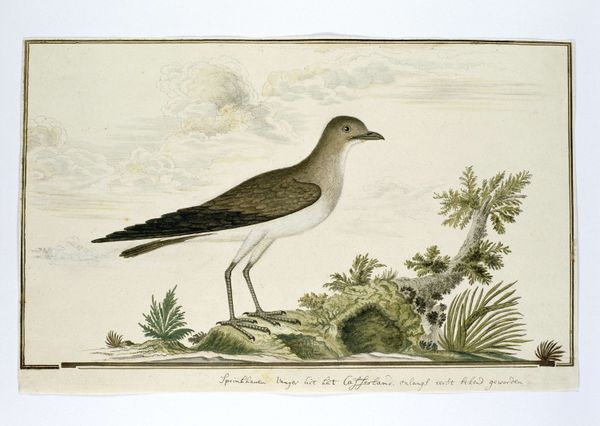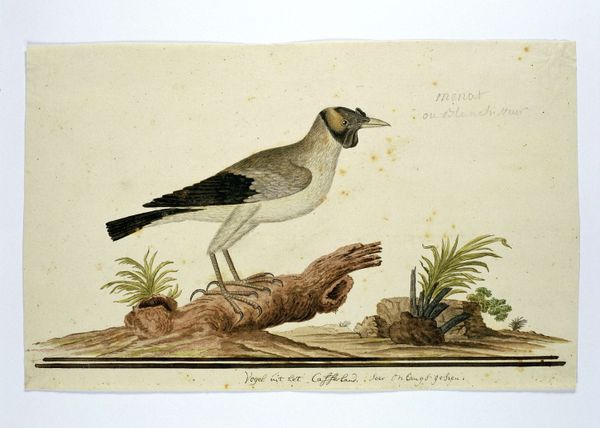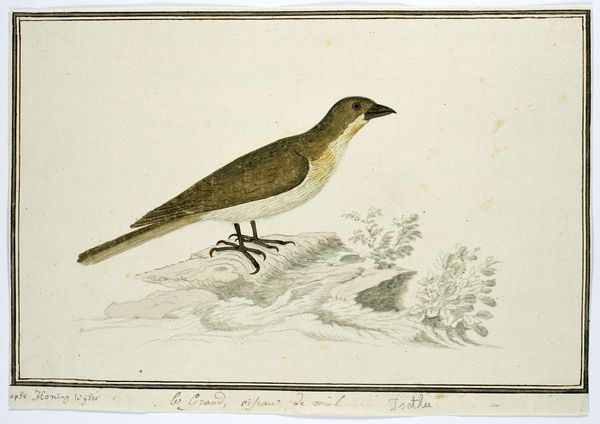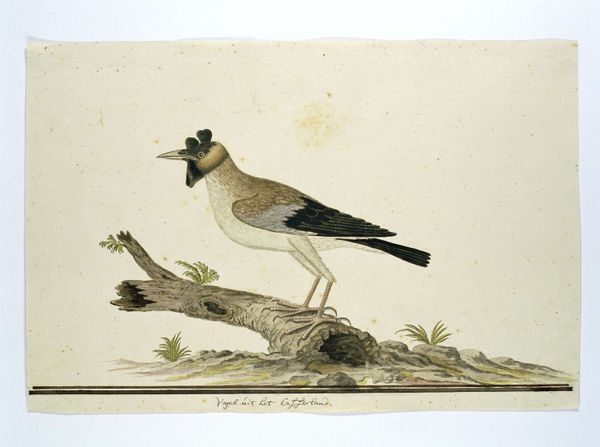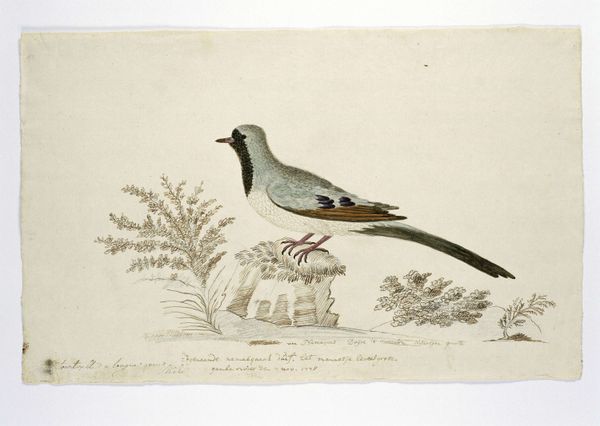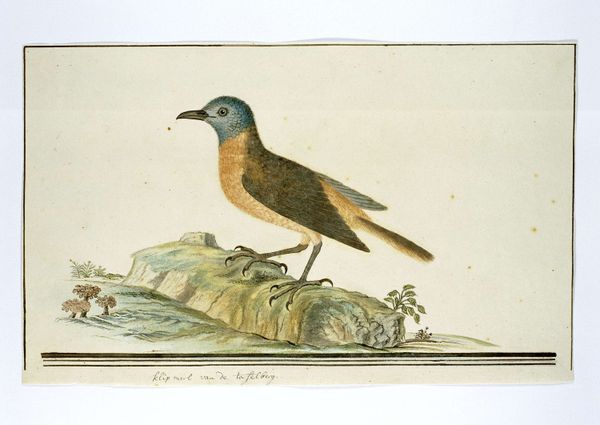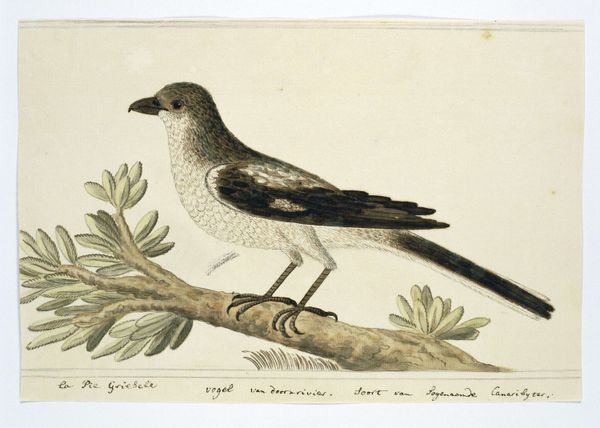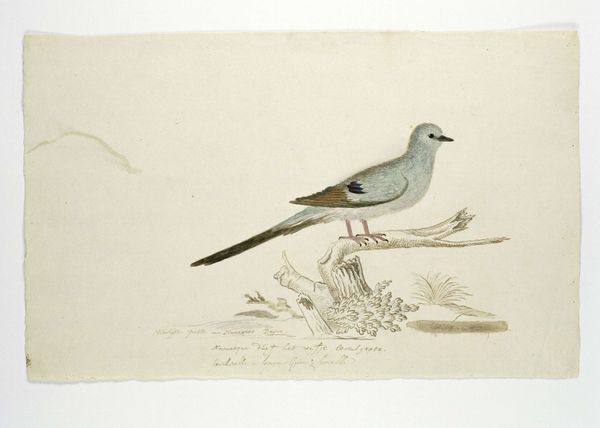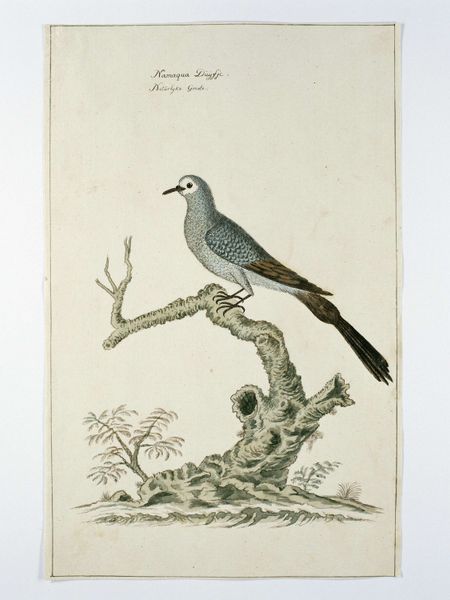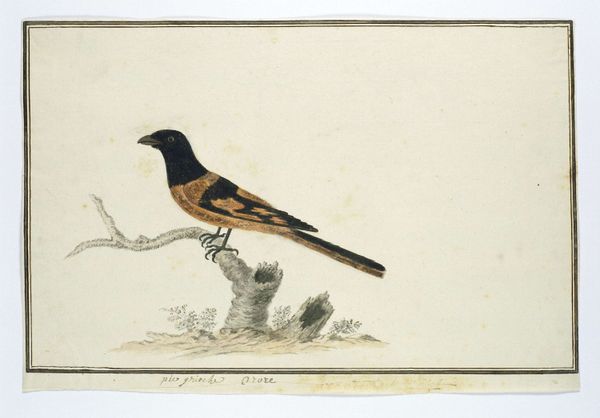
drawing, watercolor
#
drawing
#
landscape
#
watercolor
#
animal drawing portrait
#
watercolour illustration
#
botanical art
Dimensions: height 660 mm, width 480 mm, height 259 mm, width 411 mm, height 239 mm, width 398 mm
Copyright: Rijks Museum: Open Domain
This delicate watercolor of a Cape grassbird was made by Robert Jacob Gordon, a Dutch explorer and military officer, in the late 18th century. The natural pigments have an inherent luminosity, allowing the artist to create a lifelike depiction of the bird and its habitat. Although seemingly straightforward, the creation of watercolor paintings involved a complex interplay of labor and resources. Raw materials like pigments were sourced globally, reflecting colonial trade networks. The paper itself would have been handmade, a labor-intensive process. Brushes, too, were carefully crafted. Consider the level of skill required to accurately capture the bird's form and plumage. Gordon would have needed a steady hand and a keen eye, not only to observe the bird in its natural habitat, but also to translate those observations onto paper. Far from being a simple depiction of a bird, this watercolor is the product of a network of materials, labor, and knowledge. It invites us to consider the relationship between art, science, and colonialism in the 18th century.
Comments
No comments
Be the first to comment and join the conversation on the ultimate creative platform.
